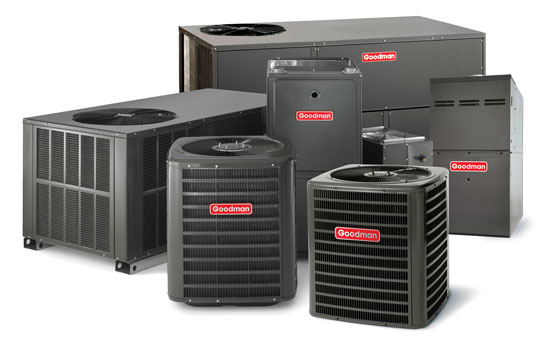Regular cleaning and maintenance will save you money and extend the life of your HVAC unit. Howell, NJ, Freehold, NJ, First Degree Free Estimates available, we service all brands.
Howell, Freehold, Colts Neck, Rumson, Fair Haven, Little Silver, Tinton Falls, Neptune, Jackson, Farmingdale, Ramtown, New Jersey and all of Monmouth County, Ocean County, Middlesex County.
Trane, Honeywell, Rudd, Goodman and all other brands.

Keep your air-conditioner (AC) maintained and you’ll not only save money on energy, but you’ll also extend its lifespan, saving money on costly early replacement. Franco Galluccio, HVAC pro from First Degree, says, “An AC needs regular attention to be sure it’s operating at the highest efficiency.” The best time to use these tips is just before each cooling season begins.
Your Heating, Ventilating, and Air-Conditioning system (HVAC) will consist of either a furnace and AC or a furnace, which both heats and cools. Both types will have an interior unit (evaporator and blower) and an exterior unit (condenser coil and compressor). These instructions apply to a whole-home air-conditioning or heat pump unit.
A few simple steps done by https://firstdegreenj.com/
Remove Debris
On the exterior condenser/compressor, remove the fan cage. Using a screwdriver or wrench, remove the fasteners and lift the cage or fan grill away from the top of the unit. By hand, or with a wet/dry vacuum, clean leaves and other debris from the interior.
Clean The Fins
Remove the outer covers and use the brush attachment on a powerful shop vacuum to remove all outside dirt. Then, using a gentle stream from a garden hose, spray through the fins from the inside out to remove any built up dirt or debris from between them. Never use a pressure washer, since the pressure can damage the fins. If the fins are particularly dirty, use a commercially available fin cleaning spray (available at home improvement centers; read and follow manufacturer directions).
Straighten The Fins
Since any reduction in air-flow through the fins can reduce efficiency, carefully straighten bent fins using a butter knife or commercially available fin-straightening tool. Be gentle so that the tubing embedded within the fins is not damaged.
Level the Unit
Over time, the pad upon which the condenser unit sits can begin to tip as the soil settles beneath it. An out-of-level condenser unit can cause the compressor within to fail early. Check the condenser for level and use rot-resistant shims to bring it back to level. Service Experts’ Moody adds this exception: “If you have a heat pump system, it’s okay for the pad to be slightly sloped away from the home’s foundation to allow for defrost run-off during the winter.”
Clean the Evaporator Coil
Now it’s time to move inside. On the inside blower/furnace unit, find the evaporator coil door. You may need to remove some foil duct tape and take out a few screws or bolts. Inside, use a soft brush to dust off the coil, then spray the coil with commercially available no-rinse coil cleaner (available at home improvement stores). The spray will foam up and then drip into the drain pan. Clean out the drain pan with soap, hot water, and a little bleach. Then, pour a cup of 50% bleach/50% water down the drain. To keep the drain clear longer-term, place a commercially available drain pan tablet in the pan. This will inhibit future algae growth.
If the bleach solution drains easily, skip the next step. If not, move on to next step. Replace the evaporator coil door and use foil duct tape to re-seal, if necessary.
Clean a Plugged Evaporator Drain
On the interior, warm, humid air from your home’s interior is blown through the evaporator coil. The cold coil absorbs heat from the air, cooling it, before the air is circulated back into your home. The humidity in the air condenses on the cool surface of the evaporator coil as liquid water, dripping into a pan below. From the pan, the water flows into a drain tube which is typically routed into a basement floor drain, utility sink, or outdoors.
Over time, algae and mold can build up and potentially plug the drain, so if the drain is either not flowing or flowing very slowly, it will need to be unplugged. A plugged drain can either cause damage by flooding onto the floor or, if the system is equipped with a drain float, cause the system to stop cooling in order to avoid flooding.
First, find the drain line where it leaves the evaporator coil enclosure. The drain is usually a one-inch PVC pipe (white, grey, or black). Follow it to the end where it drains. Often the line drains outside near the condenser unit, but it can also drain into a utility sink or basement floor drain or, in the case of attic units, down an outside wall.
Once located, use a wet/dry vacuum to clear the drain. It’s best to remove the paper filter from the wet/dry vacuum so as not to ruin the filter. Hold the hose of the wet/dry vacuum to the end of the drain line. You can use duct tape or simply hold a rag around the gap. Turn on the vacuum for 2-3 minutes then turn off. This will clear the drain of any growing biological matter.
Change The Blower Filter
The filter in your HVAC system should be changed at least twice a year – once just before the heating season begins and once before the cooling season begins. If you live in a particularly dusty area, you may want to change it more often. Always replace the filter with a new filter that has the same airflow rating. Again, Moody cautions, “Be careful with ‘air purifying’ or HEPA filters,” he says, “because they can dramatically reduce airflow in your system. That can cause the indoor coil to freeze because of the reduced airflow.”
Locate the filter enclosure on the indoor furnace/AC where the large fresh air return duct enters the unit. You may need a screwdriver to turn the latch to open the door to the filter enclosure. Remove the old filter and install the new filter, matching the air-flow direction arrows on the filter to the arrows on the unit. Close and latch the door.
SERVING YOU
SINCE 1987
- A complete line of quality Air Conditioning, Heating and Plumbing equipment
- Commercial and Residential Service
- Residential Priority Service Plans
- Commercial Planned Maintenance Contracts
- Financing Available


